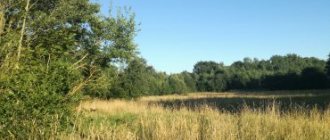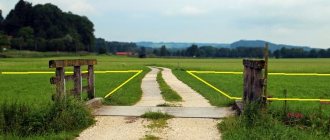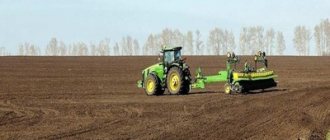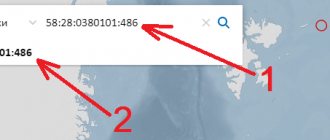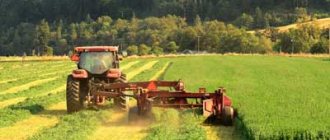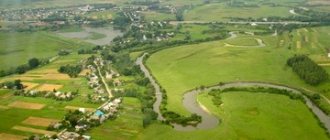The most popular types of investments:
| № | View | Average income |
| 1 | Bank deposits small percentage | 4-6% per annum Amount ~ 1 million rubles. |
| 2 | Real estate secure | 6-8% per annum Amount ~ 3-5 million rubles. |
| 3 | Bonds, bills, currency experience required | 5% -15% per annum From 100,000 rub. |
| 5 | You need an idea for your own business | Up to 300% but, of course, not immediately |
Over the past year, land values have decreased only slightly, even though demand has dropped significantly. This is due to the fact that during the crisis and high dollar, many companies closed, especially for small and home-based businesses.
About a quarter of hired workers employed in individual entrepreneurs have lost their income, and the solvency of the country's population has sharply decreased. In order to somehow improve their lives, many began to sell their real estate, but a problem arose with the buyers, because they found themselves in a similar situation.
As a result, supply many times exceeded demand, which is why prices slowly began to fall. In many regions, for example, in the Samara region, several thousand real estate properties are put up for sale at record low prices, which have not been seen since the crisis of 2008, but no one is in a hurry to buy them.
Pioneer Earl
“My grandfather told me how our ancestors worked with Stolypin. Russia then, in a few years, became one of the leading agricultural powers,” recalls Mikhail Orlov, a descendant of a noble dynasty. “Not so long ago, just 100 years ago, we had the largest collection of varieties of various crops.” Orlov, in his words, felt “offended for the state,” which in the mid-1990s strengthened its position as a net importer of grain. But there were also purely economic reasons. “There is a chronic imbalance between supply and demand in the global agricultural sector,” he adds.
Therefore, in the mid-2000s, Orlov, a financier by training, decided to go into agriculture. Although he achieved success in the financial field in the 1990s: he headed the Moscow offices of Western investment companies Invesco and Carlyle Group, and in 2002–2004 he headed the investment fund Ballington Investments.
Orlov purchased the first Danilovka farm in the Kaluga region. “I trained on it. Working on the land in post-Soviet conditions was not easy,” the businessman recalls. Here he learned how to consolidate and register shares, and here the idea came to create Agro-Invest, a company with a large land bank that grows various crops.
A year later, Orlov purchased the first 12,000 hectares for Agro-Invest in the Kursk region with his own funds. He does not name the volume of start-up investments. At that time, land in Russia cost a penny compared to other promising agricultural regions, such as Brazil - several hundred dollars per hectare, recalls one of the large owners of agribusiness in Russia. And then a problem arose: “I understood that if I want to do a large project with a land bank of several hundred thousand hectares, then I need large investments, about $650 million,” says Orlov. He didn’t have that kind of money, and Russian investors had no desire to invest. Western investors were ready to help, but foreigners cannot own land directly. What to do? Orlov turned to lawyers.
Expert advice
This year, experts do not advise investing in agricultural land. According to analysts, such investments are unprofitable and will take a very long time to “fight off”.
They are located at a great distance from federal highways and cannot be transferred to other categories. These areas are suitable for growing produce and livestock farming; it is better not to choose them as investments.
The fact is that the creation of a livestock complex or land for growing various crops is a fairly long process and a significant investment. Now, despite support from the state, there are very few people willing to purchase such lands from you and organize their own business related to private household plots on them.
Rural mortgage
One of the possible items that could have a positive impact on the growth of buyers is the Rural Mortgage, which was adopted relatively recently. Thanks to it, residents of villages and villages will have the opportunity to get a housing loan at a very low interest rate, which should indirectly encourage people to move from the city “to the land.”
At the moment, only Rosselkhozbank has announced the implementation of this program through its branches, and here are the conditions that apply now:
- Amount – from 300,000 to 5,000,000 rubles,
- The interest rate is 2.7% per annum, if you refuse personal insurance it will be 3%;
- The minimum down payment is 10% of the cost of housing,
- The contract term is up to 25 years.
We have collected original reviews on this topic here, reviews from real people, many comments, worth reading.
The funds can be spent on purchasing land, building a residential building in rural areas, or purchasing a residential building or townhouse that is already ready. You can use additional subsidies and certificates, in particular, money from Maternity Capital, as well as a subsidy of up to 450 thousand at the birth of the third baby.
What do they recommend?
- Cottage villages
Cottage villages can be built on agricultural lands that have permission for gardening and summer cottage construction. Investments in plots located in picturesque places with developed infrastructure promise good profits.
Initially, empty, undeveloped land can be purchased at a low price for 1 hundred square meters. After the construction of cottages on it, its value will increase significantly.
Many people are now selling their apartments in the city and moving to private houses. For them, this is cheaper than living with a large family in 3 or more room apartments. You can drill your own well, utilities will be much cheaper, and don’t forget about the discounts that are given to residents of rural areas.
There are several options for resale of such land
- Plots for construction without a contract. The buyer coordinates the project with the architect of the cottage community and builds the house himself.
- Plots for construction with a contract. The buyer purchases a plot of land, and the house is built by a construction company based on a finished project. The main advantage is the delivery of the entire village, including recreation areas, sports grounds, cafes and shops.
- The company builds a cottage community at its own expense and then simply sells off the houses. For the buyer, this option is the most expensive, but the most convenient.
The cost of land in all these cases increases by 50-200%. Where to get a housing loan for a plot of land, read here
- Land without construction
If construction is not planned, and the purpose of investment is only resale, then profit should be expected only from land located in areas attractive to buyers: the Moscow region and the suburbs of megacities, resort areas, plots near federal highways.
Such lands will not fall in price, since even if purchasing power decreases, there will be demand for them.
- Sites near federal highways attract businessmen with the opportunity to build gas stations, motels, and roadside cafes. The closer the location to popular attractions, the more profitable the investment.
- Resort lands are another profitable investment option. Since the annexation of Crimea, large businessmen have new opportunities.
- For medium-sized businesses, investing in farm plots is suitable. After the ban on the import of agricultural products, such a business could turn out to be very profitable. According to forecasts, prices for peasant farms will rise in the coming year.
- Profit from farm plots can be obtained after the development of the economy on them. Agricultural lands can also be transferred to this category, after which they can be sold as peasant farms.
You might also be interested in these articles:
Mythical threat
How much land is actually under foreign control? According to official information from foreign agricultural companies, they collectively own 568,000 hectares in Russia. However, what is meant by property in this case—land directly or shares purchased from villagers—is not entirely clear, experts warn. The property may contain up to 1 million hectares, believes Dmitry Rylko from ICAR. According to ICAR, Russian and foreign firms have registered ownership in the legal sense of the word of no more than 20% of the total area of arable land.
Is it a lot or a little? In Russia, less than 400 million hectares are classified as agricultural land, of which 115 million hectares are arable land. However, about 77 million hectares are cultivated, states Dmitry Rylko. 2.5 million hectares under the control of foreigners is about 2% of the total volume of Russian arable land. Russian land will never be consolidated in the hands of 10–15 major players, Rylko notes. “Competitive agriculture is a classic area of activity for small and medium-sized businesses,” he believes.
Advertising on Forbes
Chairman of the Board of Directors of Rusmolco Naum Babaev believes that Russia needs liberalization of land legislation: “If foreigners were allowed to own land directly, large investments would come to Russia.” Novoselov says that several large foreign funds are currently at the decision-making stage, and if the law were changed,
then they are more likely to invest in the Russian agro-industrial complex.
Presidential press secretary Dmitry Peskov doubts that the land issue will be resolved in the near future: “The entire complex of land relations in our country has not been resolved. It cannot be resolved quickly because it is very complex.” As for the liberalization of the law banning foreigners from owning land directly, a clear position “has not yet been developed,” Peskov told Forbes.
Is it worth buying for yourself?
All of the above pros and cons, advice from economists are relevant for those people who want to invest in land to further earn money from them. And in this case, investors have some idea about the market, its condition, prospects, etc.
But what to do if you have never been interested in this type of investment before, but now you have savings, as well as the need to sell them in the form of real estate? We can say unequivocally - in this case, most of the data given earlier does not apply to you.
If you need a plot of land to build a country house for living with your family, or to build a country house for the summer season, or you want to create your own small farm or workshop, then the most ideal conditions have now been created for these purposes.
Most people who had land before the crisis are now trying to sell it, and very often at a good discount due to low demand. Of course, there is a chance that if you wait a little, you will find even lower prices, but then you may have competitors from other buyers.
If you need the plot for personal purposes, and not for profit, then we definitely recommend investing money in this direction. Of course, if for some reason you have to urgently sell such an object, it will be problematic to do this at a high price, but this small risk is still justified.
According to experts, prices for some land plots will increase by 30-40% in 2021, so it is worth investing in them. But there are risks that during the crisis purchasing power will decrease and prices, on the contrary, will fall. So don't rush to choose
If you want to find out where it’s better to invest your money to make money this year, then follow this link. If you are interested in deposits, then you can check out the best offers from banks here.
03/25/2019 Information about the authors | Category: Current | Investments
Role Model
In the fall of 1996, Gazprom divided its shares into “local” shares, that is, traded on Russian exchanges, and American depositary receipts, intended for foreigners. Foreigners were not allowed to buy shares on the domestic market, which were several times cheaper. Six months later, President Boris Yeltsin signed a decree according to which foreigners could own no more than 9% of Gazprom shares in total.
Investment bankers have found ways to circumvent this ban. The authorship of the “gray” schemes that allowed foreigners to buy “local” shares is attributed to the ex-Minister of Finance and founder of the United Financial Group, Boris Fedorov. The essence of one of them was as follows. The offshore company, together with Russian companies A and B, established company C, in the capital of which the offshore company had less than 50%. He, in turn, together with companies B and C, became the founder of company A.
It was this scheme that Russian lawyers who worked with Gazprom shares advised Orlov to use to create a structure that could own Russian arable land in the interests of foreigners without breaking the law. To be on the safe side, Orlov consulted with independent lawyers. Everyone confirmed: there are no violations.
This is how the Agro-Invest Group of Companies appeared, known in the West as Black Earth Farming. The parent Black Earth Farming Ltd still directly owns the Cypriot offshore Planalto Enterprises, which owns 40% of shares in LLC Management Company Agro-Invest and LLC Management Company Agro-Invest Regions. The latter two own the remaining 60% shares in each other. The land itself belonged to subsidiaries registered under one of two Russian management companies.
Over two years, from August 2005 to August 2007, Orlov attracted $217 million in foreign capital to the company along with investors, including the Swedish funds AB Kinnevik and Vostok Nafta Investment. At the end of 2012, they were the largest shareholders of Black Earth Farming with stakes of 24.9% and 24.8%, respectively.
Black Earth Farming was enjoying success in 2007 when the owners decided to take it public. (Orlov at that time still had 1.87% of the company’s shares; he does not say how much he had earned before. He finally left the project in 2009.) The timing for the placement was chosen extremely well - stock indices were reacting to another food crisis, and prices for soft commodities (grain, coffee, sugar, etc.) grew at an unprecedented pace. Investors broke the bank: demand for Black Earth Farming papers exceeded supply seven times, and its capitalization on the day of placement, December 19, amounted to $904.8 million. In mid-March 2008, it broke the billion dollar mark.
Advertising on Forbes
The triumph was short-lived. In the fall of 2008, when the crisis began, Black Earth Farming shares hit their peak: on October 24, the company was worth only $188 million. For companies in the agricultural sector, the crisis lasted until 2012: in 2010, due to heat and drought in Russia, the lowest harvest was harvested over the past 10 years, in 2011, high carryover grain stocks due to the embargo did not allow producers to earn money. And on July 13, 2012, Black Earth Farming was worth its lowest price since its IPO - $138.4 million.
In 2012, the company reaped a good harvest, and high prices on the world and then on the domestic market allowed it to earn good money. At the end of 2012, Black Earth Farming for the first time received a net profit of $7.2 million with revenue of $229.3 million. Investors appreciated the achievement: by April 5, 2013, the company had grown in value to $378 million. Capitalization as of August 2, 2013 - $231 million The interest of Russian investors in Black Earth Farming is still low, says BCS analyst Tatyana Bobrovskaya, everyone is waiting for its business performance to at least double.
